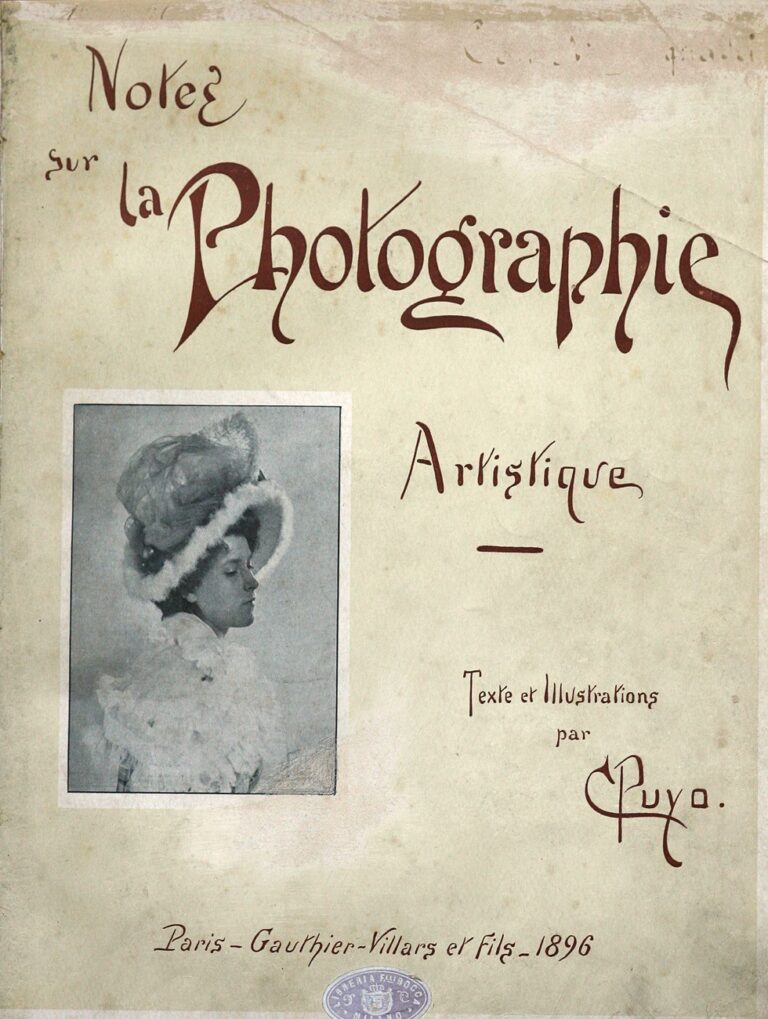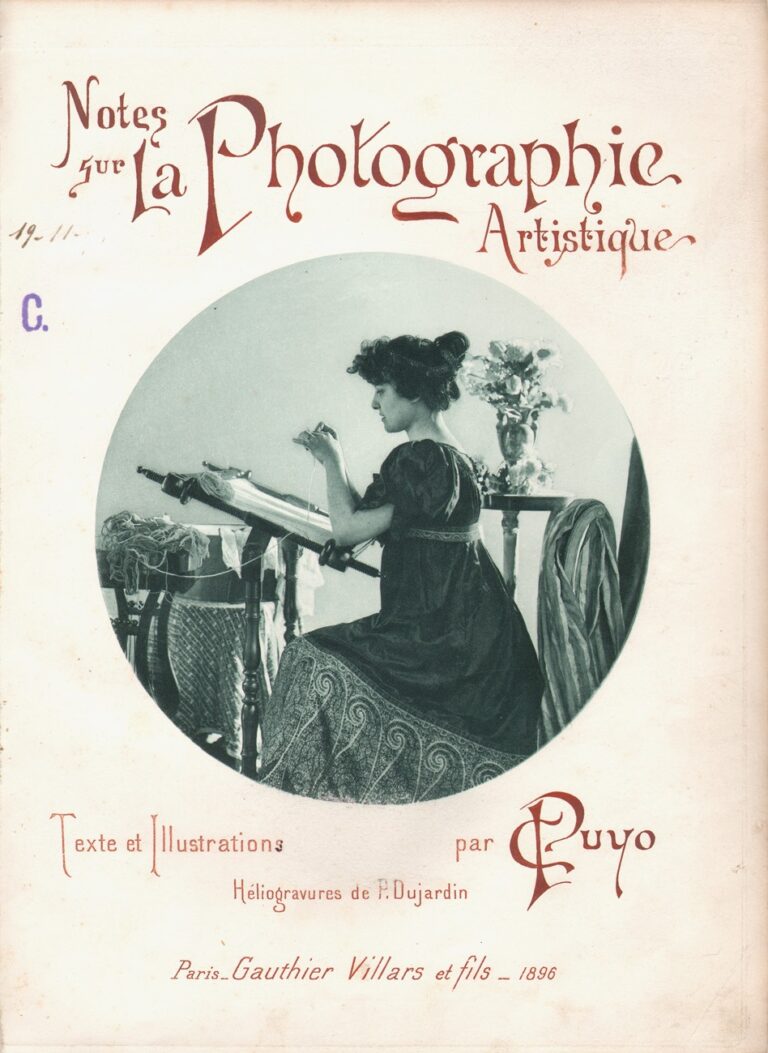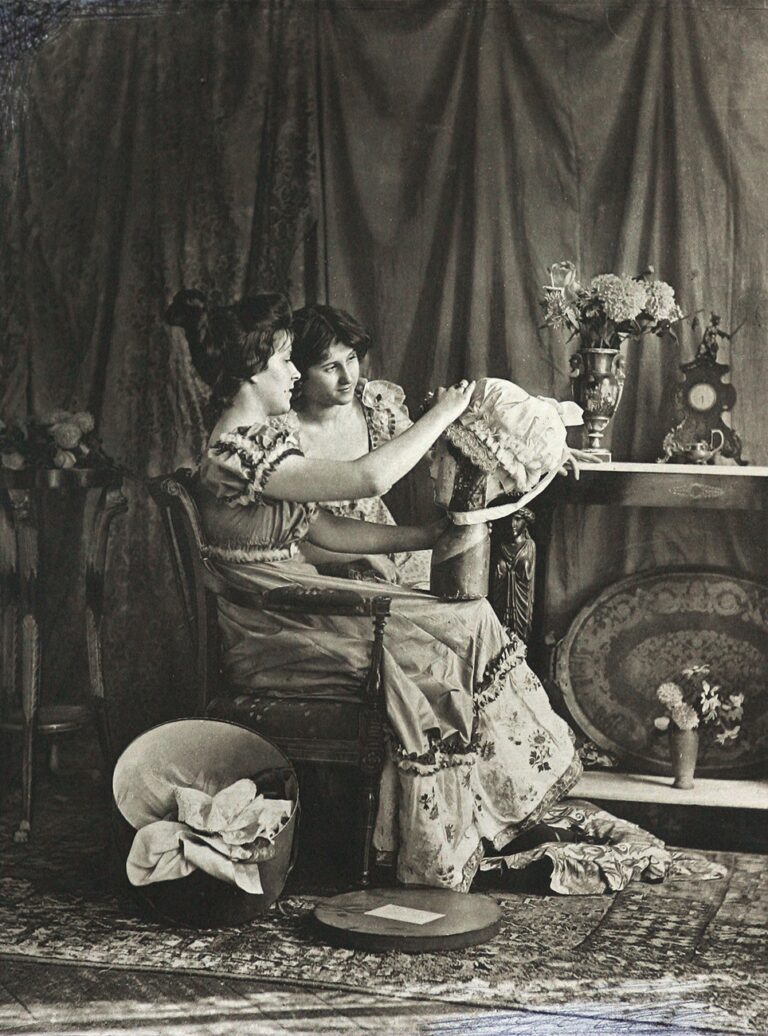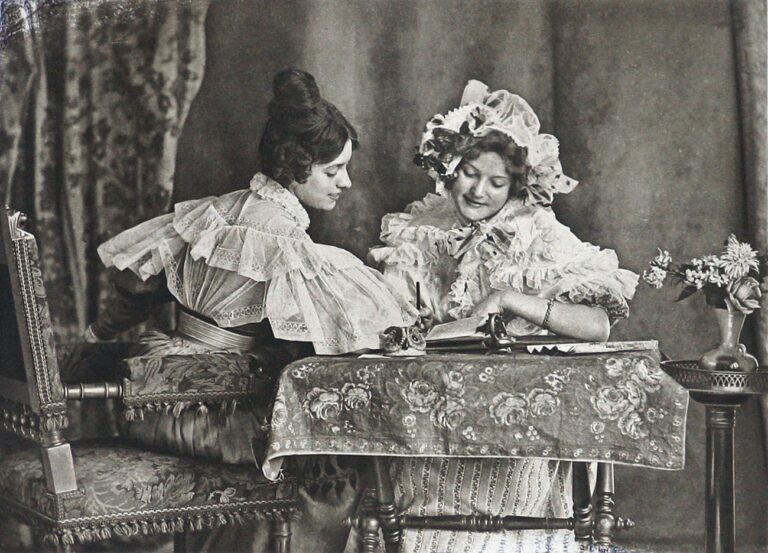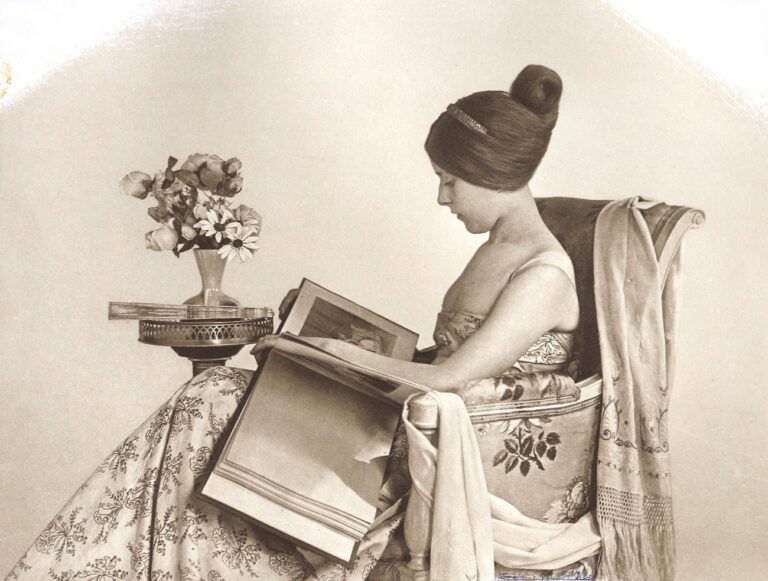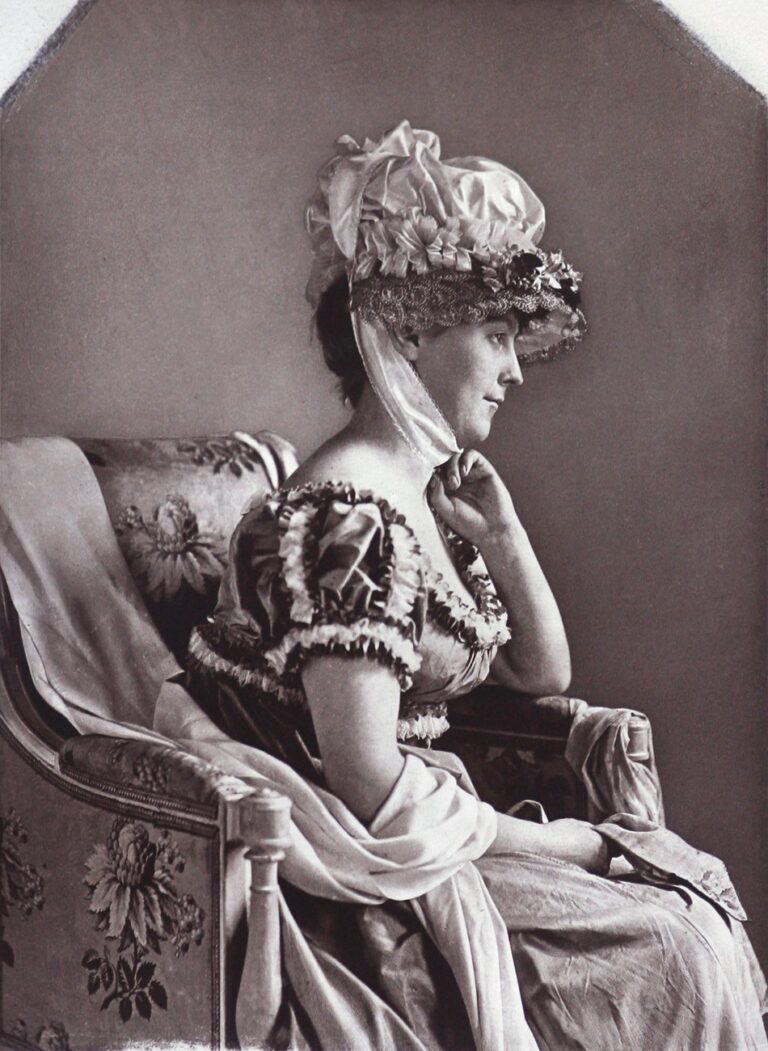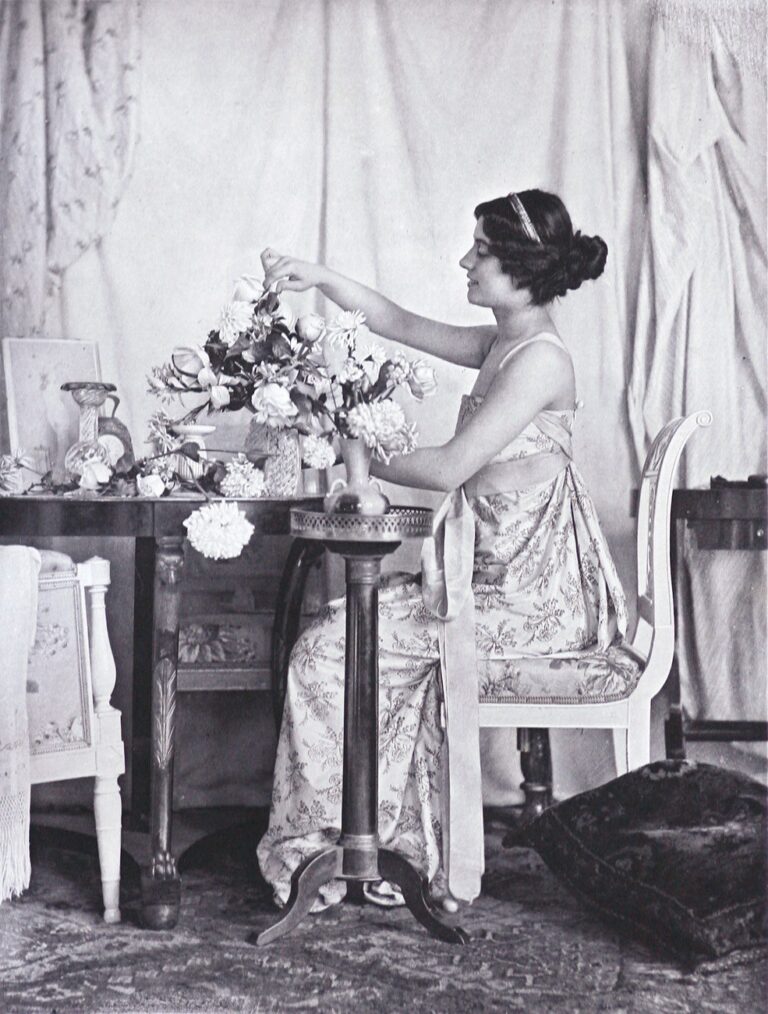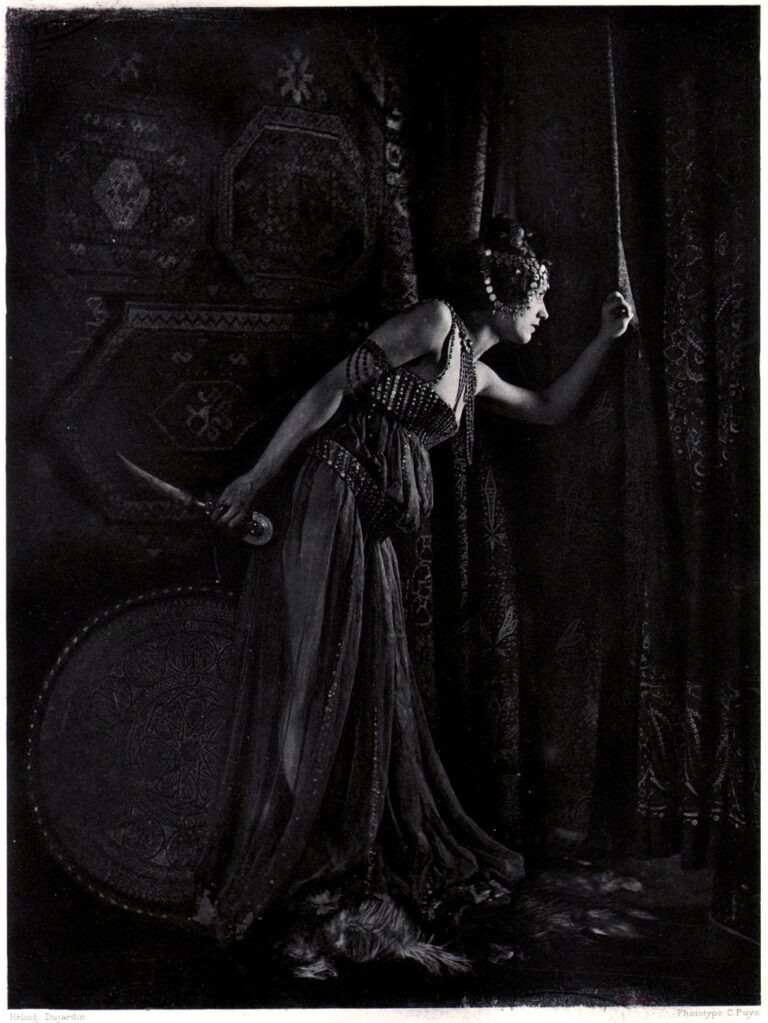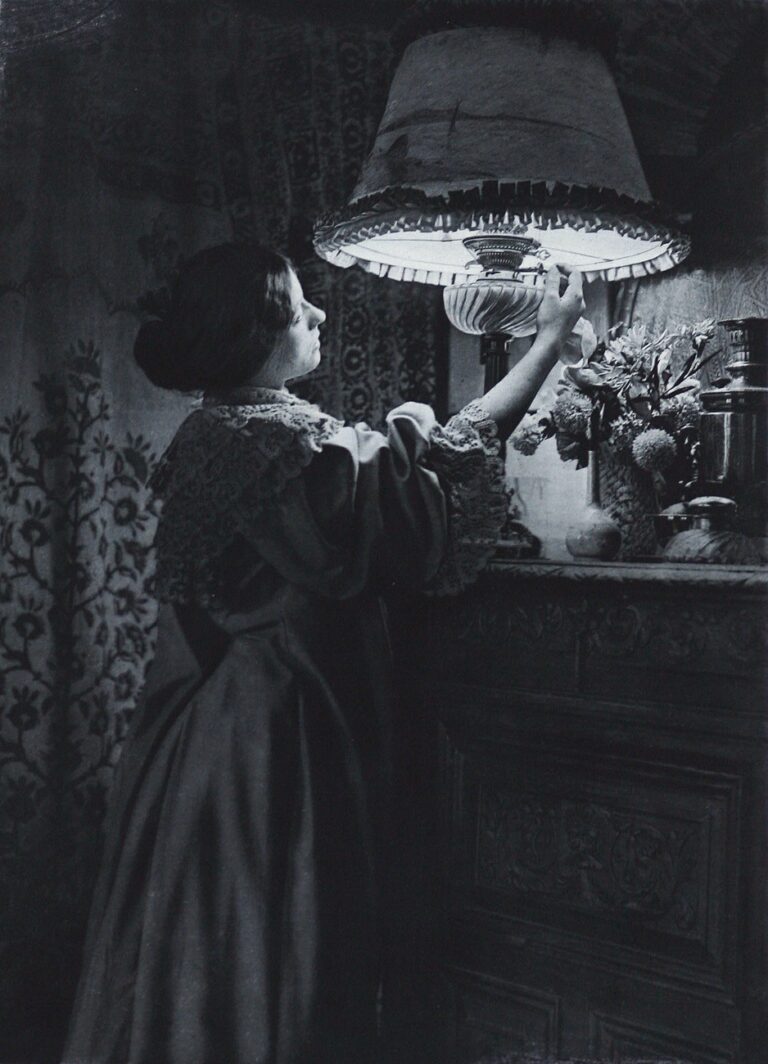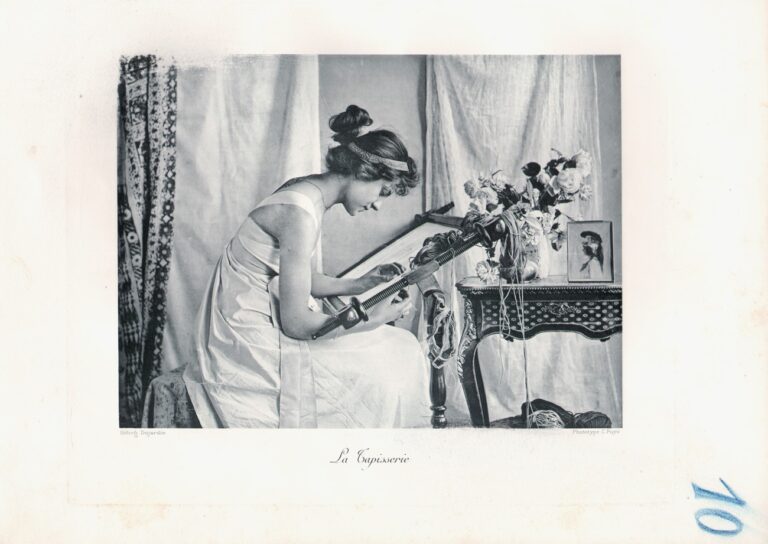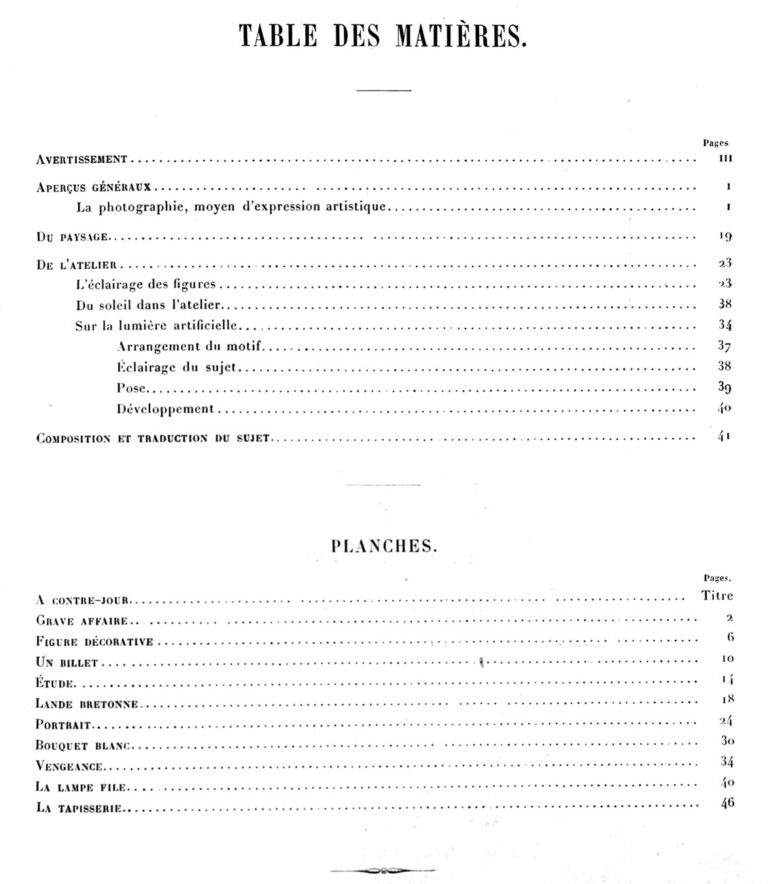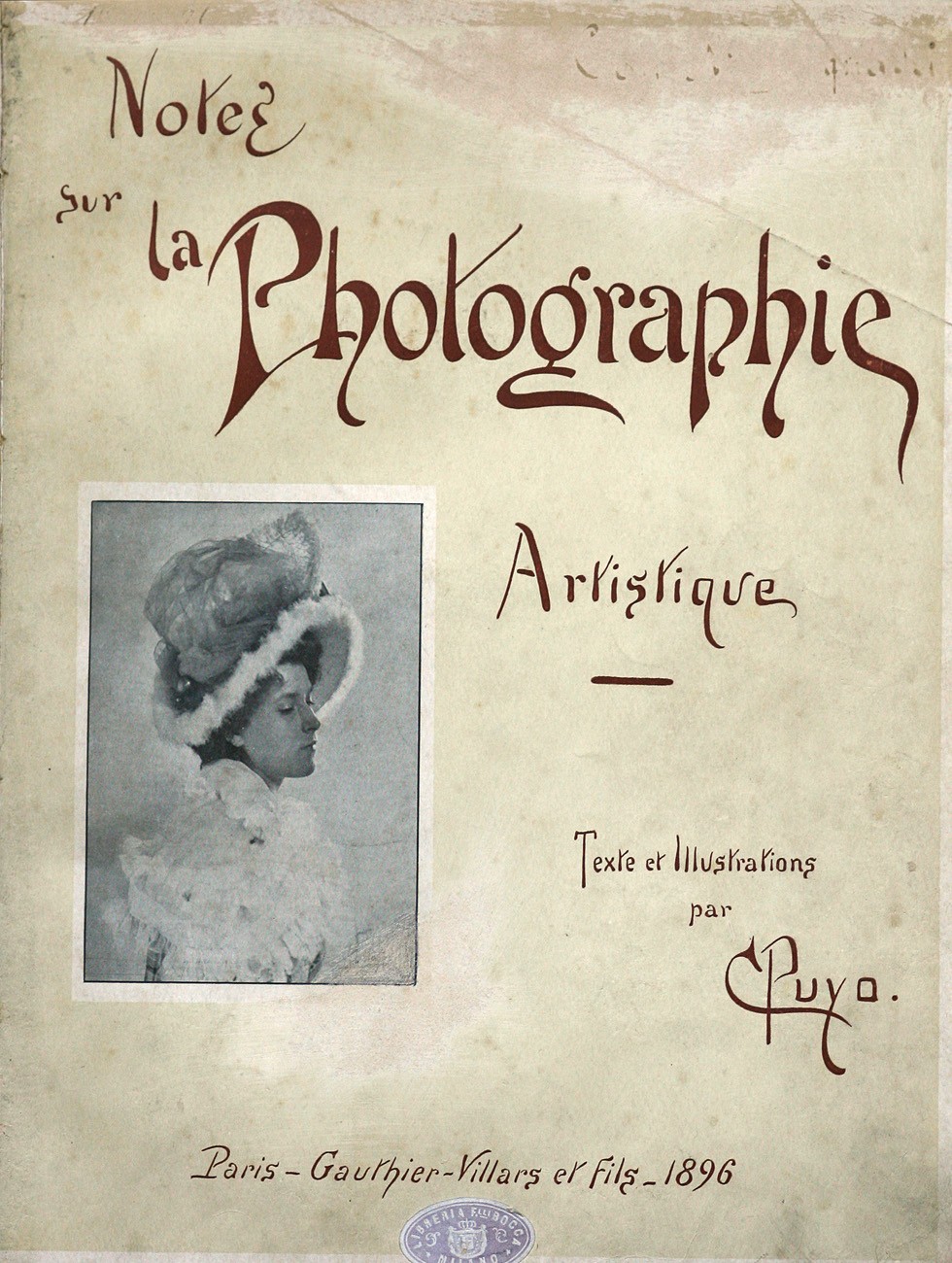
Notes sur La Photographie Artistique
Introduction: Notes on Artistic Photography
In 1896, the French photographer Constant Puyo, a prominent and founding member of the Photo-Club de Paris, published his first book, titled Notes sur La Photographie Artistique. (Notes on Artistic Photography) Issued in wraps in a slightly larger than Quarto format and running 50 pages in length, the volume includes 10 full-page hand-pulled photogravures (1.) executed by Paul Dujardin and printed by Charles Wittmann, both of Paris, and an additional 39 halftone (typogravure) photos reproduced within the text pages.
Table of Contents
The Table of Contents published at the rear of the volume includes the following sections corresponding to the text of the book written by Puyo:
Avertissement. (warning, or disclaimer)
Aperçus Généraux (La photographie, moyen d’expression artistique) (Overviews: photography as an art form)
Du Paysage (Landscape)
De L’Atelier: (The Studio) with the following subchapters:
L’éclairage des figures (The lighting of figures)
Du soleil dans l’atelier (The Sun in the Studio) (natural light)
Sur la lumière artificielle (artificial lighting)
Arrangement du motif (Arrangement of the pattern)
Éclairage du sujet (Lighting of the subject)
Pose
Développement (Development) (technical)
Composition et Traduction du Sujet (Composition and Translation of Subject)
Avertissement (disclaimer or warning-addressed to the reader)
Puyo begins the volume with a disclaimer (Warning / Avertissement) which is translated here in full and which we also include in the original French:
Warning.
In the following notes, the processes of photography are treated as a means of artistic expression. This austere subject is accompanied by a series of motifs reproduced in photogravure by Monsieur P. Dujardin rendered with a sincerity that I would like to pay tribute to. It is essential to affirm that these images by no means claim to be representative but to entertain the eyes for a moment?
Many typogravures have been included in the text, published all over Europe, offering varied examples of the type of work that is commonly found. Many of them are new, and others have been kindly provided by various periodicals: The Bulletin of the Photo-Club de Paris, The General Directory of Photography, I would like to thank for their kindness.
C.P. (Constant Puyo)
Avertissement.
Dans les notes qui suivent, il n’est traité des procédés de la Photographie qu’en tant que moyens d’expression artistique. Ce sujet austère sert d’accompagnement à une série de motifs reproduits en héliogravure par M. P. Dujardin avec une sincérité de rendu à laquelle il me plaît de rendre hommage. Est-il indispensable d’affirmer que ces images ne prétendent nullement au titre de modèles et qu’elles bornent leur ambition à amuser un instant les yeux?
De nombreuses typogravures ont été semées dans le texte; exécutées un peu partout en Europe, elles offrent des spécimens assez variés des différents réseaux employés communément. Beaucoup d’entre elles sont inédites; les autres m’ont été très obligeamment communiquées par divers périodiques : le Bulletin du Photo-Club de Paris, L’Annuaire général de la Photographie, que je tiens à remercier ici de leur amabilité.
C. P.
A True Working Copy
We would like to issue our own disclaimer on the images posted in this online gallery. Ordinarily, we would shy away from including photographs on this site that have been altered after publication unless by the hand of the photographer. However, we make an exception with these plates from this copy of Notes sur La Photographie Artistique because we feel they reflect an interesting response to the time they were initially published, and therefore instructive to modern-day viewers. Keep in mind, the very idea of photographs as works of “Art” was not an accepted view by many at the time (1896) this volume was published. Its very title would have elicited both serious interest, amusement in others and outright scorn by some. For these reasons, and perhaps also in response to personal artistic edification or strong conviction of aesthetic considerations by a previous owner, the margins of each photogravure plate have been altered slightly in select areas using a blue pen or graphite stylus. Several of the photographs, including #4: Etude, have significant areas of the plate additionally erased in order to produce a different look to the photograph entirely. In addition to these alterations, intriguing marginalia (see: La Tapisserie: plate #10) in the form of the tell-tale editor’s use of blue-pencil numerals (2.) to mark each photogravure plate is evidence this working copy of the volume was marked up at one time by a professional, with the implied intent of secondary publication. 3.
Notes
1. The title page to Notes sur La Photographie Artistique is also a hand-pulled photogravure, incorporating the title to the work as well as other details within the plate mark itself.
2. The traditional use of a blue pencil in editing copy (from this period) was because the color blue: “will not show in some lithographic or photographic reproduction processes; these are known as non-photo blue pencils.”: source: Wikipedia: accessed: 2011.
3. A purple sticker affixed to the bottom margin of cover indicates this particular volume was held in the library of the Italian publisher Fratelli Bocca of Milan. Therefore, alterations to volume gravure plates may be the work of this publisher or merely a coincidence.
